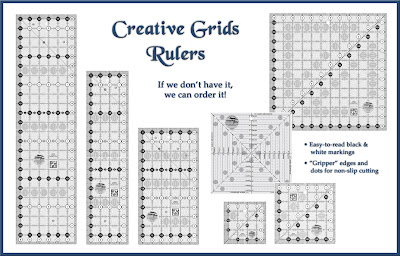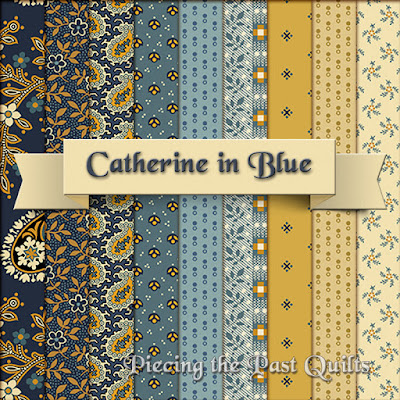My introduction to medallion quilts is relatively recent. I have friends who are amazingly talented in making these beauties in the 19th Century English tradition. So I started "collecting" them, in pictures!
The thing that is captivating me in this genre is the use of so many beautiful techniques. Piecing, applique, broderie perse, and English paper piecing are all utilized in these lovely quilts.
Let's take a tour of some of those I have found. I'm starting with English quilts. We'll look at those made in America next time.
* * * * * * * * * * *
Mrs. Billings' Coverlet
1805 - 1810
Leeds
84.5" x 84.5"
Amazing! This intricately pieced quilt is made up of fifteen frames of varying shapes. Included are hexagons, squares-on-point, diamonds, and triangles. The piecing is absolutely stellar!
Fabrics are printed cotton dress prints and some furnishing prints.
Mrs. Billings was a housekeeper in a large home. It makes me wonder how she accumulated all the fabric pieces for this and when and where she did her piecing. I also wonder how long it took her to make it. Such an incredible quilt.
It is housed at the Quilt Museum and Gallery in York.
You may read more about it and see it close up with their zoom feature
here.
* * * * * * * * * * *
Mary Staveley Medallion Quilt
Dated 1833
East Yorkshire England
99" x 82.5"
The medallion in this quilt is embroidered in colored wools and was done when Mary was 12 years old! The pattern is so graceful and well executed.
I simply love the look of it. Blue is my favorite color, so that was an instant draw for me, but the framing feel from the alternating half-square triangles and squares is wonderful! And it's fun to see what we would call a "border print" used here.
More can be read about the quilt
here at Live Auctioneers.
* * * * * * * * * * *
1850 Mosaic Hexagon Quilt
England
I couldn't find much information about this quilt, other than it comes from England and was made circa 1850. However, there are many good pictures of it on the
Cactus Needle Blog.
So many hexagons!!
* * * * * * * * * * *
Frances Hawkins Medallion
Dated 1818
England
96" x 85"
This one is so amazing. Hexagons are used in many of the patterns, pieced 7-point stars (which appear to have been appliqued) join broderie perse applications and appliqued baskets around the central motif. The pointed border pieces are artfully arranged. Her name and the date appear to be made from hexagons, as well. Just stunning!
Originally the information about this quilt came from International Quilt Study, but I can't bring it up in order to link to it.
The following accompanied the photo on Pinterest: IQSC 2006.035.0001. Purchase made possible through James Foundation Acquisition Fund - An Elegant Geometry: American and British Mosaic Patchwork Exhibition.
* * * * * * * * * * *
English Bedcover
1830 - 1840
122" x 113"
At the beginning of the nineteenth century, Britain was inundated with new printed cottons. They made their way into the quilts of the day by way of the clothing and furnishings of the English people.
Printed panels were also popular. This quilt is an example of a panel used as the center medallion and then framed 8 times with a variety of printed cotton, piecing and paper piecing, and perhaps some applique, as well. I love that cornerstones are used in each frame, creating a consistency that draws the eye to the center. I also like the flying geese that create a lovely motion around the quilt. Beautifully done!!
It resides at the Victoria and Albert Museum and there is lots of information
here. Keep clicking on the tabs. So much history in this piece!
* * * * * * * * * * *
So, I'm actually getting inspired to make one of these. I'm trying to decide if I should use one of Di Ford's patterns, or design my own. It will probably be a combination of both!
Di's fabulous book,
Primarily Quilts is loaded with amazing designs in the nineteenth century English styles that we've just seen.
She does a stunning job of creating interesting frames/borders which make her quilts beautifully timeless.
She combines piecing, applique, broderie perse and English paper piecing, just as we have observed in the above quilts.
The color photography is absolutely gorgeous, and the instructions are presented in both English and French. And, wonderfully, the patterns are all full-sized!
Next trip to the "Museum" we'll be looking at American Medallion Quilts!
Happy Quilting!!
PLEASE NOTE:
- I am not a quilt historian. I simply enjoy finding interesting quilts and sharing them with you!
- The quilt images on this post were sourced from Pinterest unless otherwise noted, and are linked to their origin whenever possible.





































